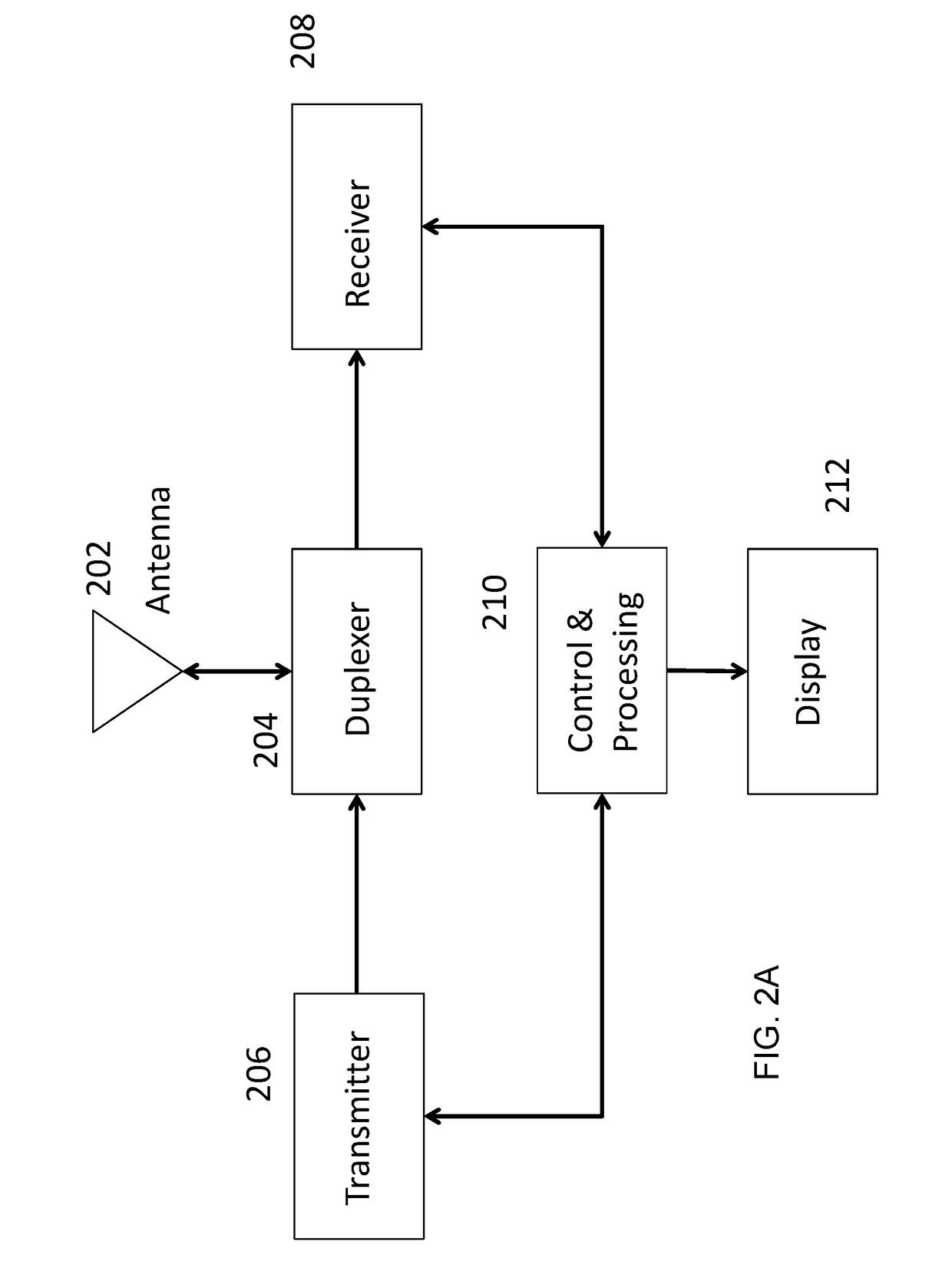Adaptive transmission and interference cancellation for MIMO radar
a technology of interference cancellation and transmission, applied in the field of vehicle radar, can solve the problems of far targets obscuring near targets, and achieve the effect of reducing the effect of self-interference and mitigate the self-interferen
- Summary
- Abstract
- Description
- Claims
- Application Information
AI Technical Summary
Benefits of technology
Problems solved by technology
Method used
Image
Examples
Embodiment Construction
[0021]The present invention will now be described with reference to the accompanying figures, wherein numbered elements in the following written description correspond to like-numbered elements in the figures. Methods and systems of the present invention may achieve better performance from a radar system when there is a near object and a far object. Exemplary embodiments of the present invention accomplish better performance by adjusting the radar system to the environment, the objective and inputs external to the radar system. The invention accomplishes better performance by adapting the radar system under software control.
[0022]The radar sensing system of the present invention may utilize aspects of the radar systems described in U.S. Pat. Nos. 9,575,160 and / or 9,599,702, and / or U.S. patent application Ser. No. 15 / 416,219, filed Jan. 26, 2017, and / or Ser. No. 15 / 292,755, filed Oct. 13, 2016, and / or U.S. provisional applications, Ser. No. 62 / 382,857, filed Sep. 2, 2016, Ser. No. 62...
PUM
 Login to View More
Login to View More Abstract
Description
Claims
Application Information
 Login to View More
Login to View More - R&D
- Intellectual Property
- Life Sciences
- Materials
- Tech Scout
- Unparalleled Data Quality
- Higher Quality Content
- 60% Fewer Hallucinations
Browse by: Latest US Patents, China's latest patents, Technical Efficacy Thesaurus, Application Domain, Technology Topic, Popular Technical Reports.
© 2025 PatSnap. All rights reserved.Legal|Privacy policy|Modern Slavery Act Transparency Statement|Sitemap|About US| Contact US: help@patsnap.com



